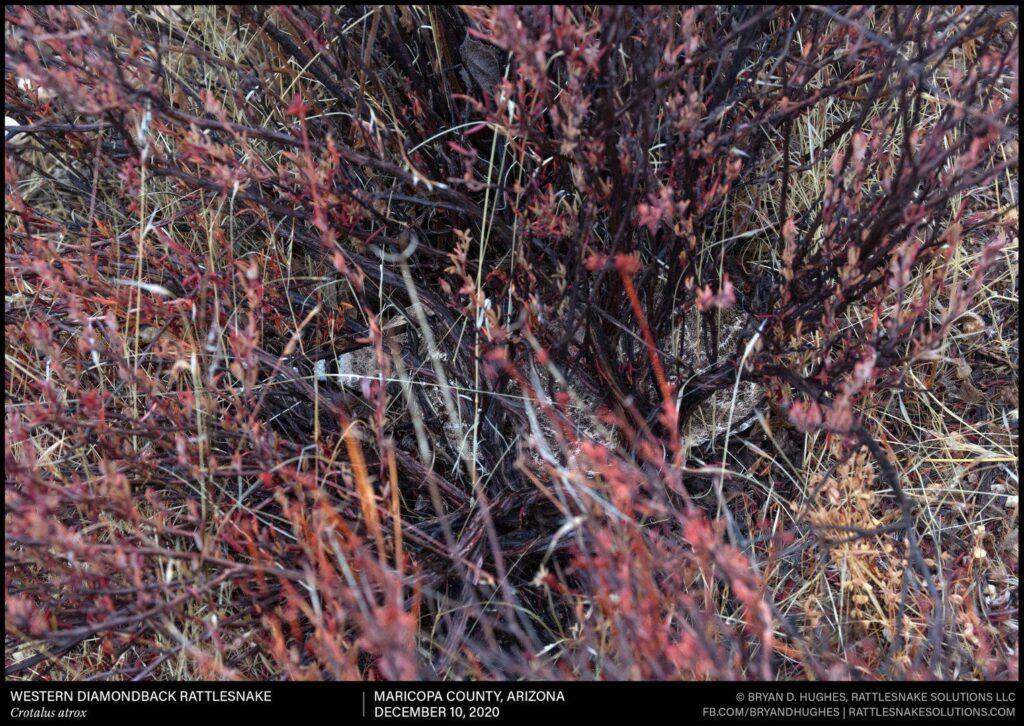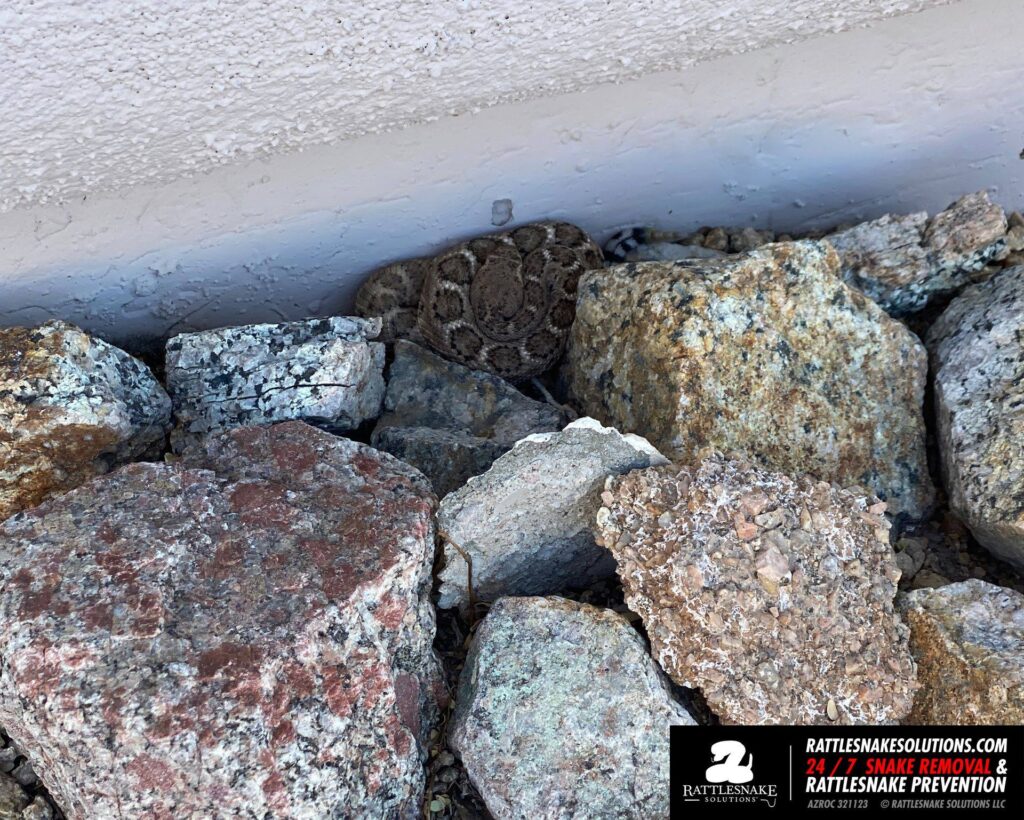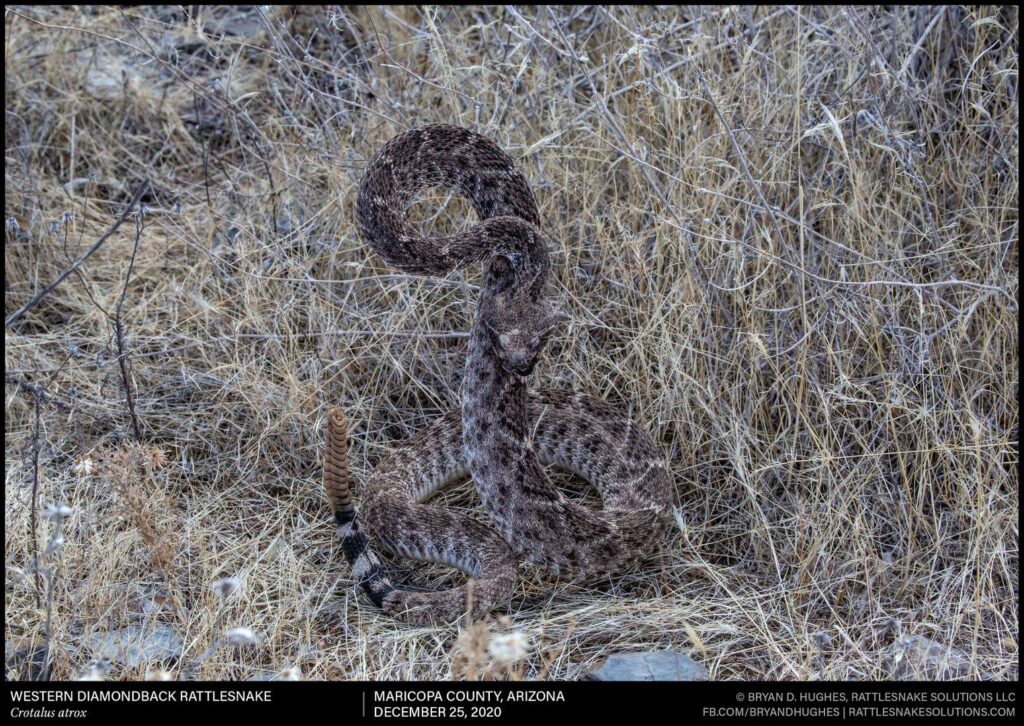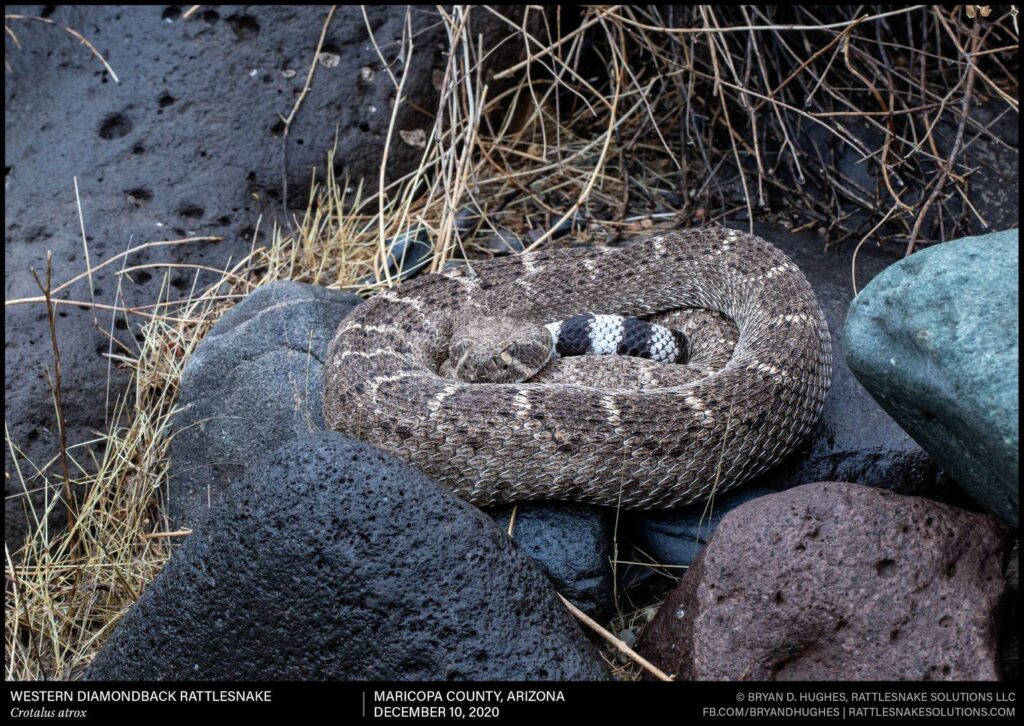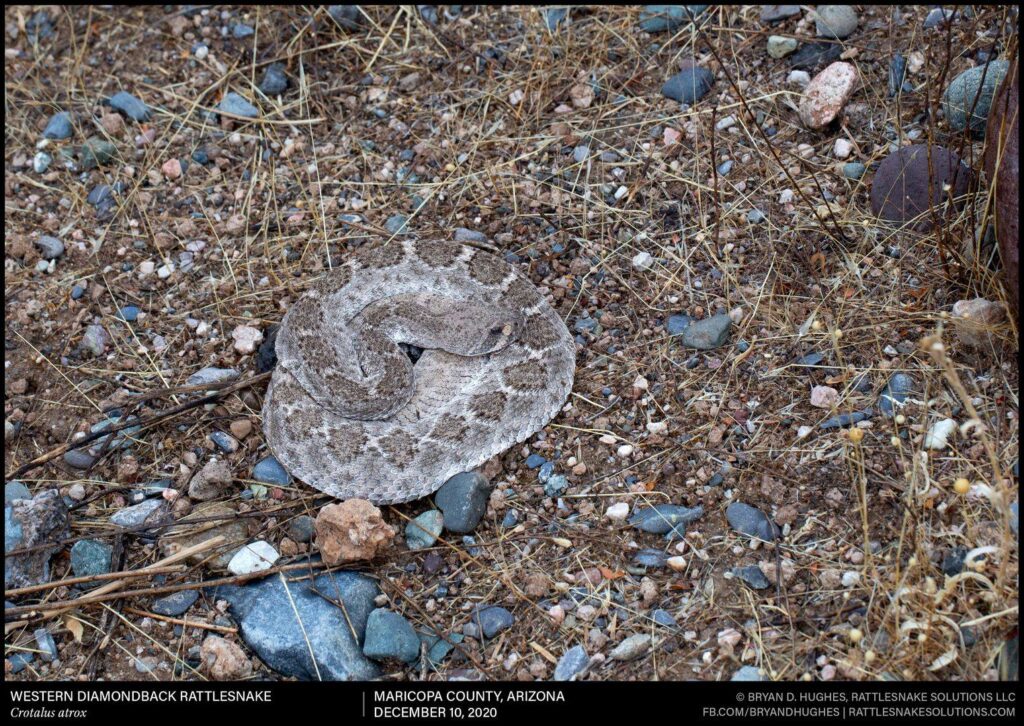You may notice that our social media feeds are still full of rattlesnake captures and relocations, even in the coolest months of the year. Be assured: yes, rattlesnakes are hibernating (or brumating if you prefer) in the winter, roughly from November through February. However, as we’ve explained in previous winters, they can still be found from time to time on the surface.
The biggest reason you’ll still see so much from us is because we meter our content so that we don’t blow you away with 20+ posts during the summer days, and make you think we’ve disappeared during the winter. Every call is unique and interesting, with lessons and experiences that should be shared, so we space it out. That means that many of the photos you’re seeing in the winter may have been from calls we ran in October, etc.
There are of course snakes that are still active during the winter, both by their own choice, and not. We cover some of the reasons you may see one at your house during the cooler months in a previous post, named after the most common comment we see on photos of snakes found in the cooler months. “I thought they were hibernating!“
Why would rattlesnakes be active when it’s so old outside?
One of the biggest misconceptions about rattlesnake behavior is that they are driven purely by warm temperatures. While it is true that rattlesnakes, like all reptiles, are cold-blooded and depend on external forces to get warm, temperature is just one of many factors that determine whether or not they’ll become active.
Here’s a great example that happened recently. In 2020, the Phoenix area broke several records for the hottest, driest summer in recent history. When rain finally came to the valley after more than 100 days without a drop, it was on a cold December day.
With temperatures barely breaking 50˚F, why would rattlesnakes suddenly become active? Simply: they have to, or risk death. With minimal effort, I was able to find 7 Western Diamondback Rattlesnakes on the surface hoping for rain. The first was found at just 45˚F, and the last at 51˚F. Comparing field notes for the day with a couple of knowledgeable friends, who also knew to put on boots instead of sweatpants for the day, showed similar results. Rattlesnakes, even in relatively cold temperatures, were very active. When rain fell again for a brief period on Christmas day, again, it was not difficult to find a lone Western Diamondback Rattlesnake coming out for a drink.
Just because we see rattlesnakes in the winter doesn’t mean you will.
People are often surprised that we are still able to find rattlesnakes in the winter – in fact it’s probably why you’re reading this right now. If you’re not someone that wants to run into them out there, don’t worry: it’s very unlikely that you will.
Rattlesnakes that we find in the winter aren’t in the same situation that you’d find them during other, warmer periods. They’re not out moving large distances, tracking prey, looking for mates, or any of the other behaviors that most often result in an encounter. This activity is much more specific – just coming to the surface of their den, and back down again when they’ve gotten what they need. That means that if you’re hiking on a trail and not purposefully searching situations that seem likely to house rattlesnakes over the winter, you’re not likely to see them at all.

